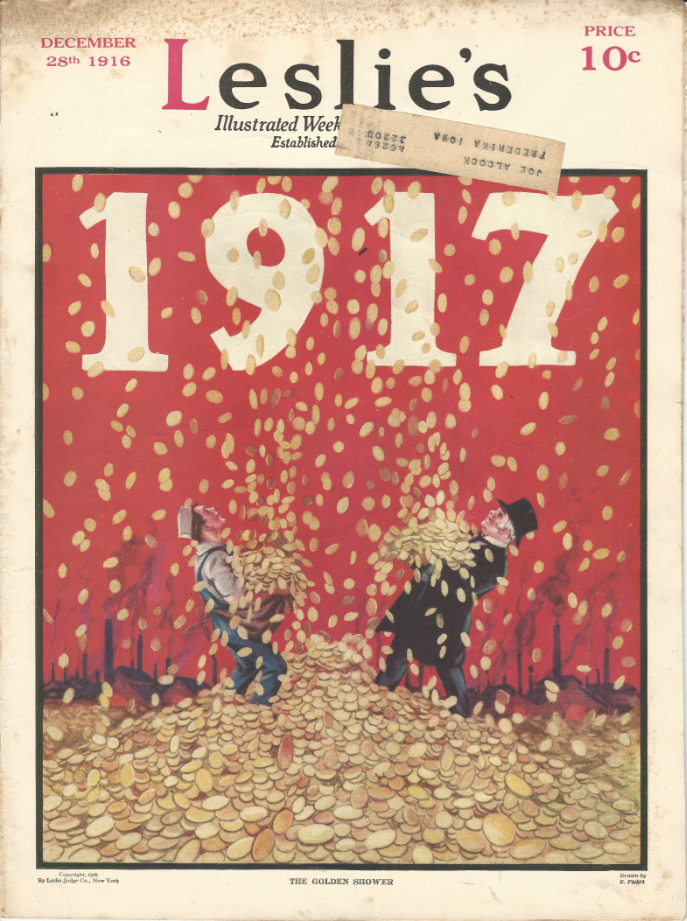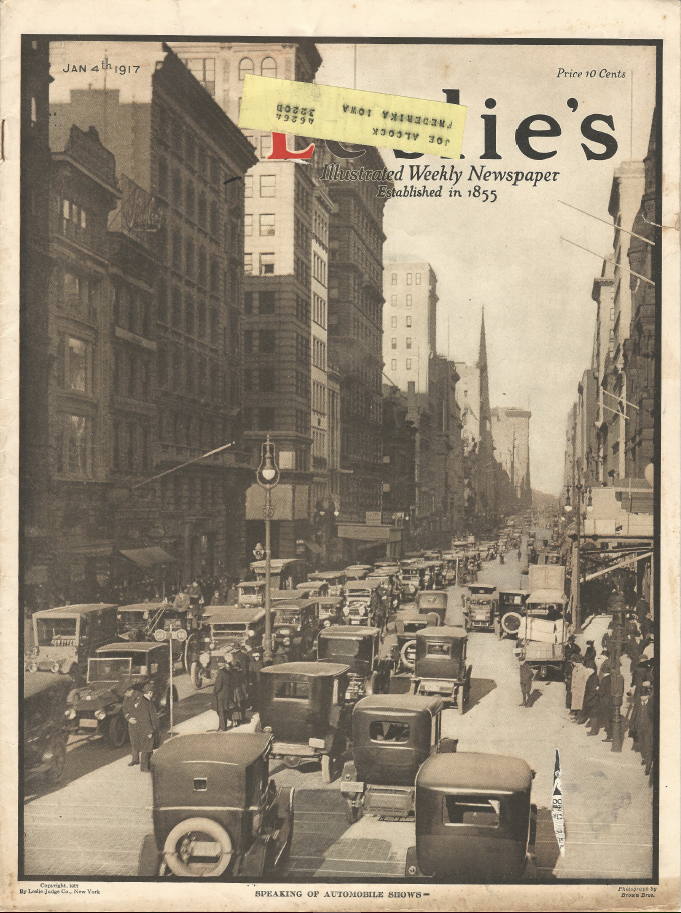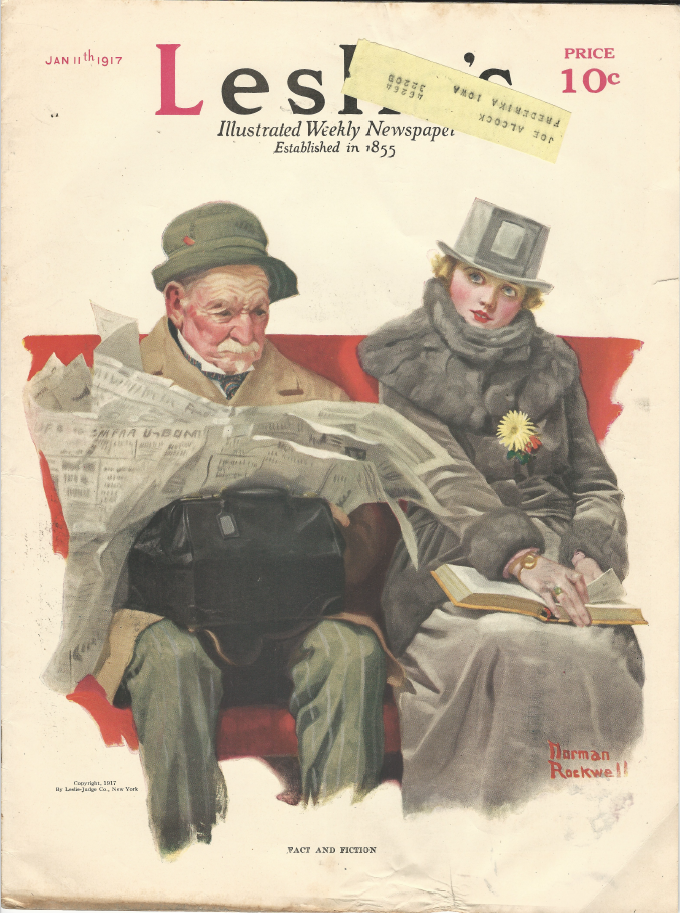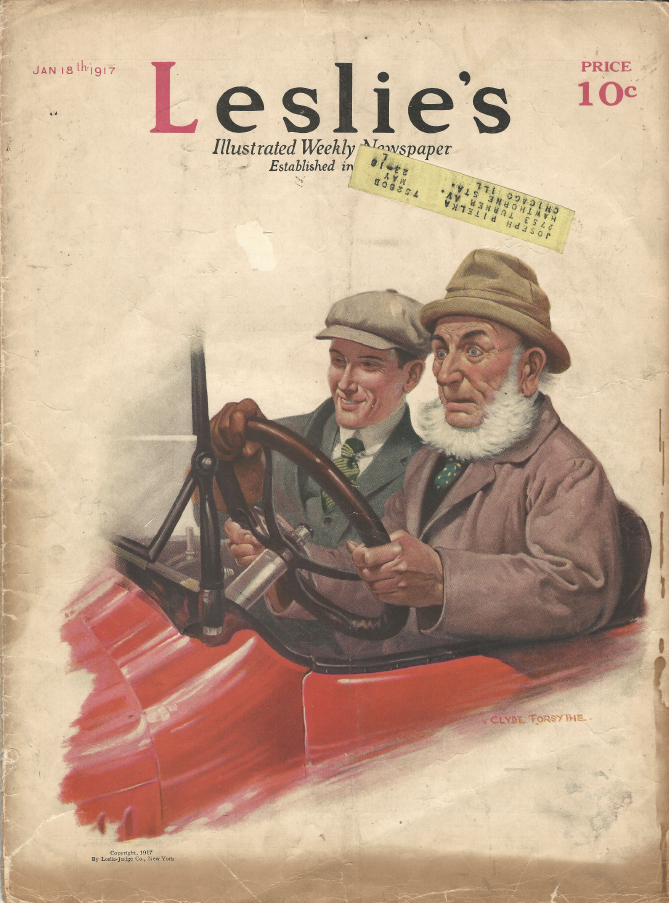Leslie’s Illustrated, Jan. 1917
The Golden Shower
1917 was ushered in with all kinds of hope and prosperity. The automobile was taking hold as a utilitarian way of transportation and moving of freight. Skyscrapers were being built taller and taller using steel as the structural support.
War was imminent – not the ongoing war in Europe but a scuffle at the border between the United States and Mexico. (some things haven’t changed)!
Little did Americans realize that 1917 was going to be a pivotal year that would radically change America and the world forever.
Speaking of Automobile Shows
American business was booming. The automobile was touted as the machine to end road pollution was beginning to create its own ways of polluting the air, and the roads.
1917 marked the end of the first great era of American automobile development. 1917 and the score of years preceding it were know in Automobile history as the brass era. Most cars had brass on the radiator, surrounding the front windshield, the lights and other small accessories. Once America entered the war, the vast amounts of brass in manufacturing was commandeered by the munitions industry to aid in the war effort.
Crowded streets like the one depicted on the cover of the January belied the fact that America, through the use of the automobile was expanding to the suburbs. Cars were credited as the invention that ended the need for a front porch and for loosening the morals of the country. They were credited with helping to make the female half of the population independent. The auto enabled women to get out of the house.
Fact and Fiction
Every generation looks nostalgically at the past. In this issue, that was created by a young Norman Rockwell, life is depicted as a mixture of past and future. Rockwell was an independent illustrator who worked primarily for the Saturday Evening Post. Pictured here is a slice of life, free and at ease. With no premonition of the change America was going to go through before the end of the year.
Anyone Can Drive
Unofficially Titled
Changing from the horse age to the motorized age would prove to be very dangerous. At first speeding cars were not a big problem, with only a few of them on the streets, but that situation changed quickly. Speed limits were as fast as 20 miles per hour, which was described in the newspaper as “tearing along the street at a lively rate, dodging people and teams.”
Just think in the first decade of the 20th century there were no stop signs, warning signs, traffic lights, traffic cops, driver’s education, lane lines, street lighting, brake lights, driver’s licenses or posted speed limits. Our current way of making a left turn was not known, and drinking-and-driving was not considered a serious crime.
In 1917, Detroit alone had 65,000 cars on the road, resulting in 7,171 accidents. Also In Detroit, everyone from nearly all incomes was driving. One family was driven around Detroit by their 11-year-old son. It was common for light truck delivery wagons to be driven by 14-year-old boys who were constantly badgered to get deliveries done by driving faster. (The fore runner of the pizza delivery guy!)
Thank Goodness for the Traffic Light, unfortunately in 1917, it had not made it to Detroit yet.
The first traffic light was installed on the corner of East 105th Street and Euclid Avenue in Cleveland, Ohio – On August 5, 1914 .
How Long Must This Continue?
War was taking over the most prominent segment of life in Europe. It was engulfing and controlling the mass of humanity in Europe. The then current war had been declared in August of 1914. In 1915 and 1916 neither side was able to move its opponent more than a few yards at a time.
All Europe was looking at the United States to tip the balance of power. In April of 1917 the United States capitulated and declared war Against Germany and the rest of the Central Powers. Thus making what had basically been a European war into a World War.





